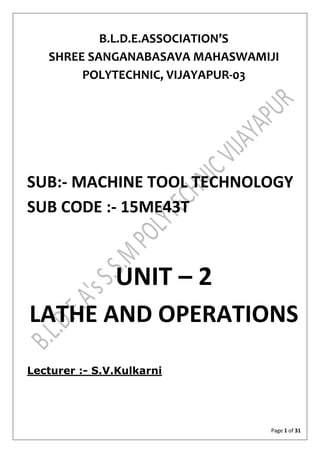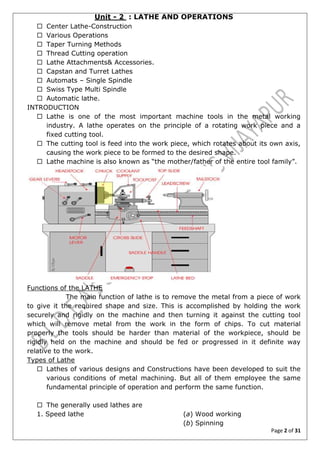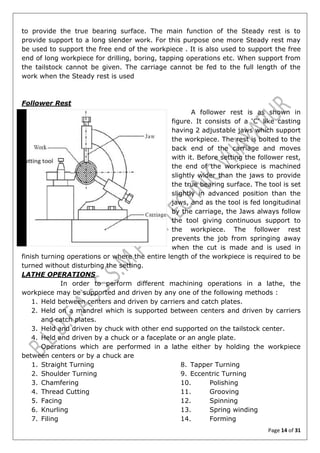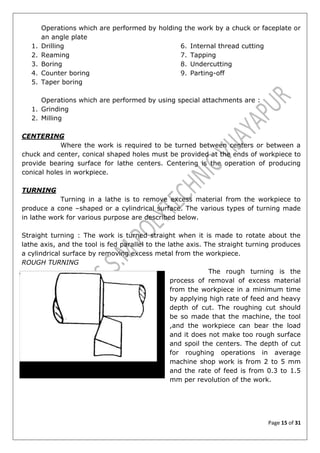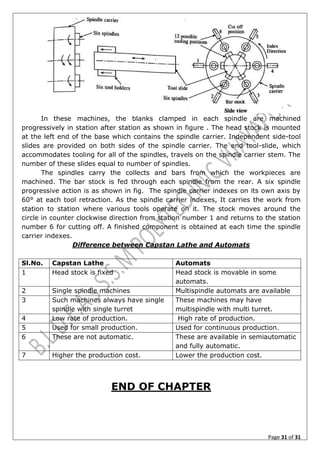This document provides information about lathe machines, including their construction, types, and specifications. It discusses the main components of lathes like the bed, headstock, tailstock, and carriage. It describes different types of lathes such as speed lathes, engine lathes, bench lathes, tool room lathes, capstan and turret lathes, and automatic lathes. It also covers topics like lathe operations, taper turning methods, thread cutting, and lathe attachments. Specification factors for lathes like height of centers, swing diameter, length between centers are defined.
